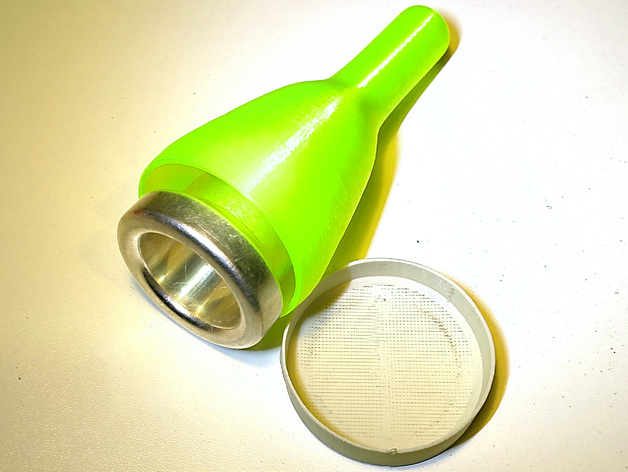
Tuba mouthpiece case
thingiverse
Tubas are hard to carry back and forth on a school bus or in a backpack. So, school-age tuba players often have a tuba at home and one at school. But they also often have a favorite mouthpiece that they carry back and forth. And school-age kids' backpacks are a harsh and scary environment. So, this case provides protection from scratches and dings. It has a friction-fit slip-on lid and an air hole to keep things from getting too funky (at least when you're not playing). Print Settings Printer Brand: SeeMeCNC Printer: ORION Delta 3D Printer Rafts: No Supports: No Resolution: 0.35 mm Infill: 10% Notes: I printed the lid in Soft PLA, which makes it flex and stay on nicely. My settings still probably need tweaking - this was the first real object I printed with it - but they are: Bed temp: 25 C Extruder temp: 230 C Speed, infill & perimeters: 20 mm/s Fan: off Extrusion multiplier: 1.05 The angle of the top lip of the base may make the lid stay decently even if it's made from a more rigid plastic like PLA or ABS. Let me know if you try it! How I Designed This I first tried this trombone mouthpiece customizer, but found that it didn't support dimensions large enough for a tuba mouthpiece. I then tried this customized version of that project, with a 118% scale factor as recommended. It printed decently, but didn't fit the Bach mouthpieces I have - the diameter was too small in some key places. I realized that these tuba mouthpieces aren't just scaled-up versions of trombone mouthpieces; the profile is fairly different. Then I tried using a similar approach to ckirby's, using Bezier curves. I measured the diameter of the mouthpiece at various heights, entered those coordinates into my OpenSCAD script, and tried to fit the curve to those points. But I got frustrated with that process - moving points in and out repeatedly, with each modification to one part of the curve influencing other parts. It seemed hard to get the curve to converge where I wanted it. So, I wrote a cubic spline library, and used that. I used the "preview profile" mode in the script (see picture below) to adjust the spline (blue) to fit the measured points (in red). Because cubic splines pass exactly through their control points, this was really straightforward to do. The libraries are included in the source ZIP file, and are also available on GitHub.
With this file you will be able to print Tuba mouthpiece case with your 3D printer. Click on the button and save the file on your computer to work, edit or customize your design. You can also find more 3D designs for printers on Tuba mouthpiece case.
